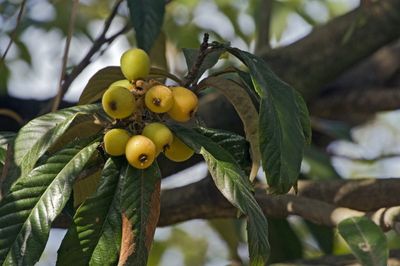Why is My Loquat Tree Dropping Fruit?
Loquats (Eriobotrya japonica) are lovely little trees native to mild or subtropical areas of China. They are evergreen trees that grow to 20 feet (6 m.) tall with an equal spread. They are excellent shade trees thanks to their glossy, tropical looking leaves. Each leaf can row to 12 inches (30 cm.) long by 6 inches (15 cm.) wide. Their undersides are soft to the touch. Flowers are fragrant but not colorful. The panicles are gray, and produce fruit clusters of four or five yellow-orange loquats. Flowers appear in late summer or even early autumn, pushing the fruit harvest into late winter or early spring. Sometimes, you may find that your loquat tree is dropping fruit. When you see fruit falling from a loquat tree in your home orchard, inevitably you want to know why this is happening. Since loquats develop in autumn and ripen in spring, it’s usually winter when you see fruit falling from a loquat tree in this country. There are several possible causes for loquat fruit drop. Loquat fruit doesn’t do well when the temperatures drop. The tree is hardy in U.S. Department of Agriculture plant hardiness zones 8 through 10. It tolerates temperatures down to 10 degrees Fahrenheit (-12 C.). If winter temperatures fall below this, you can lose much of the fruit from the tree, or even all of it. As a gardener, you are at the mercy of winter weather when it comes to viable fruit. Another possible reason your loquat tree is dropping fruit is sunburn. High heat and bright sunshine will cause a sunburn response called purple spot. In hotter areas of the world, those with long summers, purple spot causes much fruit loss. Growers apply chemical sprays to speed up the ripening of fruit to prevent sunburn. In Brazil, they tie bags over the fruit to keep them out of the sun.
